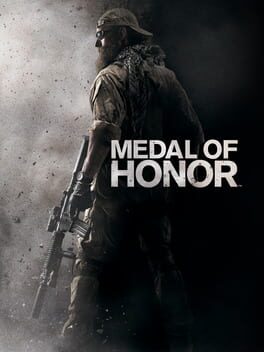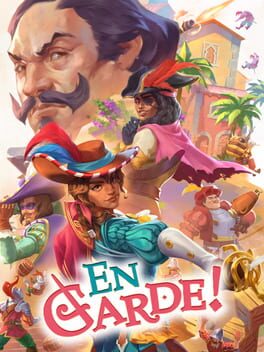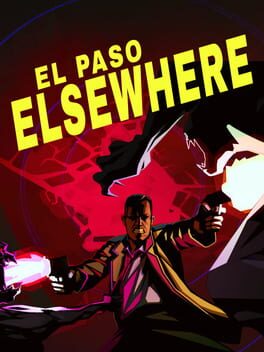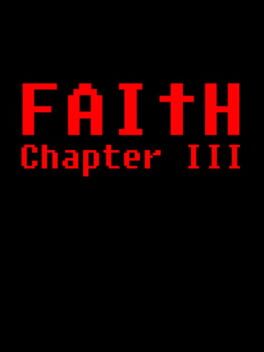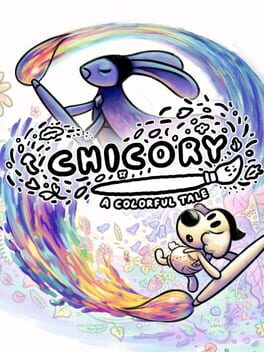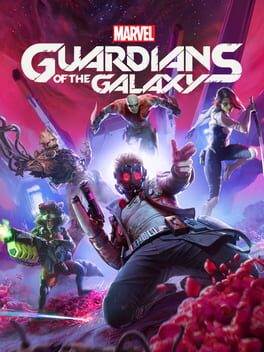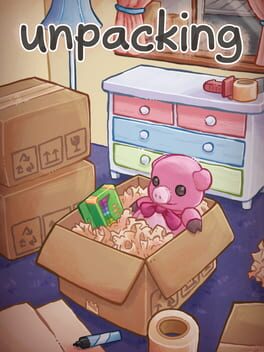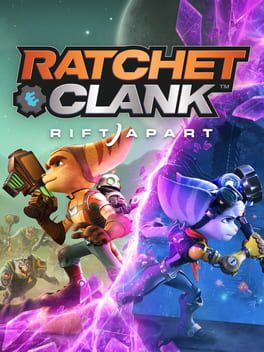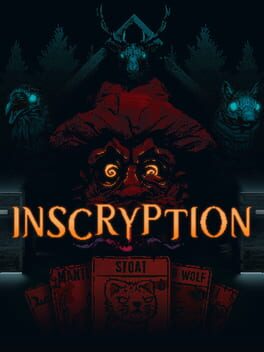TheYeti
BACKER
1124 Reviews liked by TheYeti
Medal of Honor
2010
Sonic the Hedgehog
1991
For many years I actually thought that Sonic the Hedgehog on the Master System was the same as the Mega Drive version only with 8-bit visuals. Not only is it a completely different game but it actually came out almost 6 months after the Mega Drive original.
There are some similarities, the opening stage is a version of Green Hill Zone (Complete with a nifty version of the level music) as are two others leaving 50% completely original locations. The general gameplay and structure of the game is also the same with several levels per each of the 6 zones followed by a fight with Robotnik and freeing the animals he captured as was the original game's premise.
The rest of the zones contained are different for both better and worse:
Zone 1 - Green hill - I like this zone, it's an easy going classic, there are reasons it or variations of it are normally starting zones
Zone 2 - Bridge - this is weirdly for a sonic game an auto scrolling zone. It kind of works though as this is a much slower paced platformer like it's Mega Drive counter part
Zone 3 - Jungle Zone - I have issues with this one listed below
Zone 4 - Labyrinth Zone - Another similar level from it's big brother, I like the underwater Sonic levels though I know I'm a minority there
Zone 5 - Scrap Brain Zone - So much better than it's big brothers version again, easier and less frustrating
Zone 6 - Sky Base Zone - I liked this level, had a great atmosphere
Of all the zones the only one I wasn't keen on was the Jungle zone. there is a section that's a bit tricky where you climb up a waterfall jumping on ledges and rocks. once the screen goes past a platform though it locks meaning if you try to jump back to it you instantly die even if it's a millimetre which is just kind of stupid. Other minor gameplay annoyances including how the rings work as the amount only matters for gaining extra lives. If sonic takes a hit he loses them all with one visible ring dropping you can't collect so essentially you only have the one hit to take regardless. The boss levels you don't have any rings at all though I kind of liked that as you had to learn the pattern and play skilfully. The bosses themselves aren't brutally hard though, especially to a seasoned Sonic player. Interestingly when you collect a bubble shield from a TV though it does transfer between levels so you can head into a boss with one as a possibility, I liked that.
There are Special Zones accessed through non boss stages when finishing with more than fifty rings as the only other use for them. This gives you the chance to get extra lives or continues by bouncing on springs to the end of the level in a time limit. There are no chaos emeralds here though, for a bit of a change they are actually hidden in the main levels requiring good jump control, using invincibility boxes to reach in spikes etc.
The game handles really well, the jumps and animations feel like a Sonic game should. The visuals and art design are the level of coloured and varied as I would expect, though the tiny enemy models are hilariously cute. The backgrounds are pretty static but Sonic's character model and animations are really well done. Interestingly this is actually the first game made by Ancient, the company formed by legendary composer Yuzo Koshiro. It was initially created to make this game specifically and it's Game Gear counter part before going on to later fame making Streets of rage and Beyond Oasis.
Overall I had a good time with this and the thing is I didn't expect to. It looks really nice for an 8-bit game, has a banger OST and plays well with some neat little ideas. Not everything works but overall it's a good little game.
+ Nice visuals and music.
+ Zones are fun and varied.
+ No ring bosses and emeralds on stages are different.
- Jungle Zone instant death isn't very well designed.
- Losing rings all at once is kind of lame.
There are some similarities, the opening stage is a version of Green Hill Zone (Complete with a nifty version of the level music) as are two others leaving 50% completely original locations. The general gameplay and structure of the game is also the same with several levels per each of the 6 zones followed by a fight with Robotnik and freeing the animals he captured as was the original game's premise.
The rest of the zones contained are different for both better and worse:
Zone 1 - Green hill - I like this zone, it's an easy going classic, there are reasons it or variations of it are normally starting zones
Zone 2 - Bridge - this is weirdly for a sonic game an auto scrolling zone. It kind of works though as this is a much slower paced platformer like it's Mega Drive counter part
Zone 3 - Jungle Zone - I have issues with this one listed below
Zone 4 - Labyrinth Zone - Another similar level from it's big brother, I like the underwater Sonic levels though I know I'm a minority there
Zone 5 - Scrap Brain Zone - So much better than it's big brothers version again, easier and less frustrating
Zone 6 - Sky Base Zone - I liked this level, had a great atmosphere
Of all the zones the only one I wasn't keen on was the Jungle zone. there is a section that's a bit tricky where you climb up a waterfall jumping on ledges and rocks. once the screen goes past a platform though it locks meaning if you try to jump back to it you instantly die even if it's a millimetre which is just kind of stupid. Other minor gameplay annoyances including how the rings work as the amount only matters for gaining extra lives. If sonic takes a hit he loses them all with one visible ring dropping you can't collect so essentially you only have the one hit to take regardless. The boss levels you don't have any rings at all though I kind of liked that as you had to learn the pattern and play skilfully. The bosses themselves aren't brutally hard though, especially to a seasoned Sonic player. Interestingly when you collect a bubble shield from a TV though it does transfer between levels so you can head into a boss with one as a possibility, I liked that.
There are Special Zones accessed through non boss stages when finishing with more than fifty rings as the only other use for them. This gives you the chance to get extra lives or continues by bouncing on springs to the end of the level in a time limit. There are no chaos emeralds here though, for a bit of a change they are actually hidden in the main levels requiring good jump control, using invincibility boxes to reach in spikes etc.
The game handles really well, the jumps and animations feel like a Sonic game should. The visuals and art design are the level of coloured and varied as I would expect, though the tiny enemy models are hilariously cute. The backgrounds are pretty static but Sonic's character model and animations are really well done. Interestingly this is actually the first game made by Ancient, the company formed by legendary composer Yuzo Koshiro. It was initially created to make this game specifically and it's Game Gear counter part before going on to later fame making Streets of rage and Beyond Oasis.
Overall I had a good time with this and the thing is I didn't expect to. It looks really nice for an 8-bit game, has a banger OST and plays well with some neat little ideas. Not everything works but overall it's a good little game.
+ Nice visuals and music.
+ Zones are fun and varied.
+ No ring bosses and emeralds on stages are different.
- Jungle Zone instant death isn't very well designed.
- Losing rings all at once is kind of lame.
Alan Wake II
2023
En Garde!
2023
Like a thief in the night, "En Garde" will swoop in, steal your heart and vanish in a flash.
The energy feels like a perfect fit for a Saturday morning cartoon, with its charisma and over the top nature. Combat is snappy, quick and begs you to just kick every person you see into whatever hilarious obstacle they happen to be standing next to. Presentation is pretty good overall. Cutscenes are rather stiff and lifeless but the voice actors give it their all and the environments you fight it are great set dressing.
This is a game where I recommend the harder difficulty setting. It feels very tuned for that mode and the more aggressive enemies make them feel really eager to be kicked down the stairs by a strong women. I can't blame them of course.
Overall a pretty solid experience that I just wish was longer. That should be taken equally as a compliment and criticism. If you go into the title knowing that it's short and you want a goofy thrill, then I think you'll really enjoy yourself here.
The energy feels like a perfect fit for a Saturday morning cartoon, with its charisma and over the top nature. Combat is snappy, quick and begs you to just kick every person you see into whatever hilarious obstacle they happen to be standing next to. Presentation is pretty good overall. Cutscenes are rather stiff and lifeless but the voice actors give it their all and the environments you fight it are great set dressing.
This is a game where I recommend the harder difficulty setting. It feels very tuned for that mode and the more aggressive enemies make them feel really eager to be kicked down the stairs by a strong women. I can't blame them of course.
Overall a pretty solid experience that I just wish was longer. That should be taken equally as a compliment and criticism. If you go into the title knowing that it's short and you want a goofy thrill, then I think you'll really enjoy yourself here.
Bear & Breakfast
2022
I played about half of the content the game has to offer and had every intention of returning to and finishing it. But as the months go by I find myself increasingly less interested in returning to a game that personifies a hollow pastry. All personality without the satisfaction of a fulfilling dish.
With that I mean I love the presentation. Characters are charming, visuals are nice and the music is peaceful. Locations are relatively diverse and it has a good sense of humor. But its gameplay is bogged down by too many tutorials, boring fetch quests and a limited amount of variety when it comes to property management.
Too be honest I would be willing to stick it out until the end if not for the rather abysmal switch port. It runs horribly and the controls are at best questionable, at worst horrific. I won't accept that a game that looks like this couldn't play/run better on Nintendo's hardware even with its age.
Overall I am disappointed. I think the game maybe strives to do too much and got lost along the way. If I ever give it another try it will be on PC. As for the Switch version it's a classic example to make sure you check the reviews before you book your stay.
With that I mean I love the presentation. Characters are charming, visuals are nice and the music is peaceful. Locations are relatively diverse and it has a good sense of humor. But its gameplay is bogged down by too many tutorials, boring fetch quests and a limited amount of variety when it comes to property management.
Too be honest I would be willing to stick it out until the end if not for the rather abysmal switch port. It runs horribly and the controls are at best questionable, at worst horrific. I won't accept that a game that looks like this couldn't play/run better on Nintendo's hardware even with its age.
Overall I am disappointed. I think the game maybe strives to do too much and got lost along the way. If I ever give it another try it will be on PC. As for the Switch version it's a classic example to make sure you check the reviews before you book your stay.
El Paso, Elsewhere
2023
I came for the Max Payne style gunplay. Stayed for the raw emotional story about abuse and the trauma that comes with it.
I'm incredibly impressed with what is for offer here. The writing, voice acting and visual design all adds a sort of texture to the story. A human tale of one miserable breakup between two people coated in an end of the world style flair. The real shine comes from the impressive camera direction in cutscenes. Most of them take place in the same location but the level of creativity on display make that location feel rich, constantly shifting the tone from safety to suffering.
The gunplay is strong but does have some content pacing problems. New enemies and weapons show up at odd intervals leading to long stretches without anything new to offer. However, due to the short length of the game it's less of a deal breaker and more of a noticeable blemish. The enemies all showcase specific weapon weaknesses, which is good to keep the players switching from old reliable. It's likely not going to be the thing you remember this game for but it is still incredibly entertaining to bullet time dive through a window. Just this time it will involve werewolves in a bathroom.
I really recommend you check this one out. It's another great example that we don't need photorealistic AAA graphics to tell an impactful and moving story.
I'm incredibly impressed with what is for offer here. The writing, voice acting and visual design all adds a sort of texture to the story. A human tale of one miserable breakup between two people coated in an end of the world style flair. The real shine comes from the impressive camera direction in cutscenes. Most of them take place in the same location but the level of creativity on display make that location feel rich, constantly shifting the tone from safety to suffering.
The gunplay is strong but does have some content pacing problems. New enemies and weapons show up at odd intervals leading to long stretches without anything new to offer. However, due to the short length of the game it's less of a deal breaker and more of a noticeable blemish. The enemies all showcase specific weapon weaknesses, which is good to keep the players switching from old reliable. It's likely not going to be the thing you remember this game for but it is still incredibly entertaining to bullet time dive through a window. Just this time it will involve werewolves in a bathroom.
I really recommend you check this one out. It's another great example that we don't need photorealistic AAA graphics to tell an impactful and moving story.
Faith: Chapter III
2022
Making the setting of a game like Faith as convincingly rancid as it is, religiously speaking, requires one to be well-read. All the latin here is meaningful, the gnostic symbolism thematically relevant, and in 2022, fifty years deep into this corner of horror storytelling, the territory is well-trod enough that it’s difficult to do anything really original, narratively, so it’s best to synthesize from the best, and Airdorf clearly does that throughout the Faith trilogy. Chapter 3 is the most substantial entry in the series from both a textual and play standpoint, even accounting for the way Chapter 2 is split into two parts, so its influences shine really brightly, in a mostly complimentary way. From the glaringly obvious stuff like the way the entire backbone of the emotional arc is tied to The Exorcist, to the cult plot adapting Rosemary’s Baby in increasingly big ways; to subtler things like pulling thematic context and imagery from Argento’s Inferno; to the ever present haze of Catholic and Protestant Apocrypha that colors the proceedings, there’s a lot to dig into if you want to look at Faith on a meta-level and this stuff I’ve listed is only scratching the surface of overt homage. But the thing I found myself thinking of the most while I played this one was, to my surprise, the 1974 BBC tv movie Penda’s Fen.
Penda’s Fen is about Stephen, the son of a pastor in the English countryside who is struggling through his last year of finishing school, struggling with his latent homosexuality, soon struggling with his conservatism, his faith, his understanding of English history, his understanding of church history, his understanding of his own history. These things manifest themselves as nightmares and hallucinations and eventually visions of imagined conversations and confrontations as Stephen begins to finally process what he imagines to be his weaknesses as he comes to a personal understanding of the violences imposed upon him by a stifling, cruel social order. The final sequence of the film (which you can basically only watch on youtube, and you can and should even though I am going to talk extensively about it here – it’s a very vibes-based experience) is a vision of Stephen on the hill where King Penda, the last Anglo-Saxon king in England and for whom Stephen’s town of Pinvin is named, was killed. He is visited by the spirits of modern British christofascism, who beckon him for the second time in such dreams, try to convince him that he is a chosen child, that he deserves to be their heir, that he will do great work with them and for them. When he rejects them he has to be saved from their wrath (“if we can’t have him no one can,” the Sick Mother says to the Sick Father) by the spirit of King Penda, who asks Stephen to “be secret. Child, be strange, dark, true, impure, and dissonant. Cherish our flame.” And Stephen silently begins his trek down the hill, to the town, to live his life with his eyes open, and under his own agency.
He is not so unlike John Ward. John is a pastor whose life as we know it is defined by his weakness, his victimhood, and his immutable desire to go one in spite of these things. Over the course of the trilogy we see, via flashbacks and visions and nightmares, John’s greatest moment of weakness – failing to exorcise Amy Miller, and in revisiting this moment over and over again the depth of his cowardice comes out. He goes so far as to make a deal with a demon (in disguise but a poor one) to escape the Miller home rather than try to salvage the situation or save the girl, knowing and even swearing that this act will seal her to the worst fate of anyone in the story, to be the vessel for the ultimate evil of the setting. Despite his collar, John doesn’t have faith in his God. It wasn’t strong enough when it mattered, and then it was lost, and it’s barely powerful enough to scrape him by when he needs it today. But he is driven to correct his mistakes, even if he has to suffer for them. And slowly, over the course of all three games, and conditional on the player intuiting the right course of action for John’s wellbeing, he can do this. He can save Amy, he can save his childhood sister figure Lisa from a similar fate, he can protect Father Garcia where he failed to protect his original mentor, he can rid himself of the demonic influence that has hung over his life since he and Lisa were victims of demonic ritual in their orphanage, and he will save the world from the profane sabbath.
Faith Chapter II introduced the idea that the cult recruits and preys upon the socially vulnerable, and Chapter III elaborates upon this idea, setting itself entirely within cult-run facilities: a maternity clinic, an apartment building, and a daycare center. This is an evolution of the origins of the cult, where one of the trilogy’s main villains, Sister Miriam, began the terrible practices that have evolved into the modern leadup to the Profane Sabbath by running an orphanage where she killed and experimented upon the children living there, including John and Lisa. Now her son Gary leads the proceedings towards the end of the world, where he steals babies from pregnant women and tells them they miscarried, or uses them to spawn devil children, and uses his tenants as fodder for his true demonic guests, and teaches the children in his daycare all sorts of things about the new, profane world that is going to arrive before they’re even familiar with the current one, all while beneath their feet the true cult actively works to make that world happen in their underground network of caves and tunnels.
This plays into Satanic panic stuff that has permeated the trilogy, unfounded anxieties by America’s far right and their impressionable suburban retinue about the dangers of abortion clinics and daycare facilities and urbanization and cohabitation; some of the ironic humor from past games is still there too – an example that springs to mind is Gary’s letter to the apartment complex warning them to avoid the demon haunting the building at all costs because it WILL kill them if it finds them, which details (inaccurate) instructions on how to do so, a memo that ends with a lighthearted note about rent collection and cost increases in a faux-affable tone that anyone with a corporate landlord will be intimately familiar with. Satanic Panic wasn’t just a quirky moment of hysteria in America’s past, though, it was a calculated cultural maneuver by the political right to stoke fear that would enable them to grab power and restrict freedoms, to exercise a fascistic view of who Americans Were and what Americans Should Look And Act Like against people who were Poor, Immoral, Unchristian, Nonwhite, and Antiauthoritarian. The police are the force we see actively fighting the cult more than anyone else throughout Faith and I don’t think that’s an accident.
Where a lot of media that inspired Faith is alternately directly or incidentally right wing in social messaging, or depicts the devilish as liberatory, Faith posits a world where these panicked, manufactured fears are real, and subverted against the people they’re designed to help. Something that lots of media in these sorts of spaces neglects when it comes to addressing the ways people create spaces for the marginalized is how fragile these spaces are – how vulnerable to attacks external but also infiltration by subversive power.
The important thing to understand here is that while John may be a man of the cloth with his restored faith by the end of the series, his restored power, the thing that enables him to do all of this, is not the Church. It’s arguably not God either. He is explicitly acting outside or against the orders of the Church throughout the trilogy. His entire life has been steered by institutions, whether he knows it or not, and they have each imposed their ideology upon him violently, to their gain and his personal suffering. He is a victim as much as any of the people he saves. The cult unmade and remade John. It implanted in him doubt, and fear, and demons personal and literal. His traumas inform his personage. They impose their ideology upon all of their acolytes, willingly or unwillingly, through isolation, manipulation, carrot-dangling, coercion, and violence. But the Church is not very different from this, at least to John. His time with the Church is objectively harmful to him. It’s arguable that he was put into situations he wasn’t ready for, wasn’t prepared for, that he was meat for the grinder of the exorcist cause. He is manipulated by Father Garcia into continuing a fight he has lost, and there are versions of the events of this game where he’s forced at gunpoint to finish it. John doesn’t derive sustenance from his faith, he only derives power from it. Nearly everything he gets from the Church is violently imposed upon him, too.
The only overtly supernatural element of Penda’s Fen, the only weird thing that is absolutely 100% tangibly happening outside of the psychoscape of the main character, is that there is a government facility dug underground, underneath the beautiful hills of the pastoral countryside, where some military experiments are happening. Midway through the film some teenagers are driving around late at night, a boy gets out of the car to pee, and stumbles across the facility, and whatever is in there maims him horribly. It’s unclear whether he’ll live. It’s a short sequence, and not revisited, but this is the ultimate wound at the heart of the film: that the hills, the country, the pagan pastures that symbolize freedom from repression and the cultural violence of British modernity IS in fact hollowed out and infiltrated by those same things and there's nowhere to really and truly get away from it. But that doesn’t mean you give into it. That doesn’t mean you become it. You still have to be strange, and dark, and true, and impure, and dissonant, and cherish our flame, as King Penda tells Stephen at the end of the film.
At the end of Faith Chapter III, when all the cultists are killed, and the demons are exorcised, or banished, and Amy Martin is finally put to rest, John is given a choice. The Unspeakable, the abominable horror that caused all of these problems for all these decades, that directed Sister Miriam and dealt with Gary and possessed Amy and was the recipient of the Profane Sabbath, was not defeated, only repelled. Garcia plans to dedicate his life to hunting and killing it. He’ll do this forever. When it’s done, he’ll find another demon to hunt. He’ll do it until he dies. He wants John to come with him. He wants soldiers.
Lisa asks John to put down the cross, to come with her. She doesn’t know where they’ll go, or what they’ll do, but she knows him, and she knows their history, and that they’re both victims, survivors, people without identities who for the first time, ever, have the freedom to figure themselves out if they’re only brave enough to take the first step. And she knows John can’t take that step with that collar around his throat.
If John chooses to go with Garcia, the ending is borderline comical in its machismo. They clasp hands, John says “Let’s hunt some demons,” and they drive off together into a surely badass future. But it’s hollow. John has learned conviction but he hasn’t learned anything else except how to be the person he was raised to be. Going with Lisa feels more true to the John we’ve gotten to know – the weak, morally frail man who found himself in the people he chose to love, radically, despite himself, and despite both sides of his social conditioning telling him at various points that his various mercies would be wrong to perform. John and Lisa also drive into an uncertain future, but first they clasp hands, not in the badass bro-ey way that he does in the Garcia ending but tenderly, fingers intertwined. In both endings the Unspeakable is out there. It could do all this again. An apocalypse was averted but it very much began, and we don’t know what the world looks like, really. But in one of them John is still tied to an institution that molded him into someone who couldn’t be good to other people. In the other he and Lisa are strange, and dark, and true, and impure, and dissonant. But they carry the flame. And it’s hard to believe they won’t be able to make something out of that.
Penda’s Fen is about Stephen, the son of a pastor in the English countryside who is struggling through his last year of finishing school, struggling with his latent homosexuality, soon struggling with his conservatism, his faith, his understanding of English history, his understanding of church history, his understanding of his own history. These things manifest themselves as nightmares and hallucinations and eventually visions of imagined conversations and confrontations as Stephen begins to finally process what he imagines to be his weaknesses as he comes to a personal understanding of the violences imposed upon him by a stifling, cruel social order. The final sequence of the film (which you can basically only watch on youtube, and you can and should even though I am going to talk extensively about it here – it’s a very vibes-based experience) is a vision of Stephen on the hill where King Penda, the last Anglo-Saxon king in England and for whom Stephen’s town of Pinvin is named, was killed. He is visited by the spirits of modern British christofascism, who beckon him for the second time in such dreams, try to convince him that he is a chosen child, that he deserves to be their heir, that he will do great work with them and for them. When he rejects them he has to be saved from their wrath (“if we can’t have him no one can,” the Sick Mother says to the Sick Father) by the spirit of King Penda, who asks Stephen to “be secret. Child, be strange, dark, true, impure, and dissonant. Cherish our flame.” And Stephen silently begins his trek down the hill, to the town, to live his life with his eyes open, and under his own agency.
He is not so unlike John Ward. John is a pastor whose life as we know it is defined by his weakness, his victimhood, and his immutable desire to go one in spite of these things. Over the course of the trilogy we see, via flashbacks and visions and nightmares, John’s greatest moment of weakness – failing to exorcise Amy Miller, and in revisiting this moment over and over again the depth of his cowardice comes out. He goes so far as to make a deal with a demon (in disguise but a poor one) to escape the Miller home rather than try to salvage the situation or save the girl, knowing and even swearing that this act will seal her to the worst fate of anyone in the story, to be the vessel for the ultimate evil of the setting. Despite his collar, John doesn’t have faith in his God. It wasn’t strong enough when it mattered, and then it was lost, and it’s barely powerful enough to scrape him by when he needs it today. But he is driven to correct his mistakes, even if he has to suffer for them. And slowly, over the course of all three games, and conditional on the player intuiting the right course of action for John’s wellbeing, he can do this. He can save Amy, he can save his childhood sister figure Lisa from a similar fate, he can protect Father Garcia where he failed to protect his original mentor, he can rid himself of the demonic influence that has hung over his life since he and Lisa were victims of demonic ritual in their orphanage, and he will save the world from the profane sabbath.
Faith Chapter II introduced the idea that the cult recruits and preys upon the socially vulnerable, and Chapter III elaborates upon this idea, setting itself entirely within cult-run facilities: a maternity clinic, an apartment building, and a daycare center. This is an evolution of the origins of the cult, where one of the trilogy’s main villains, Sister Miriam, began the terrible practices that have evolved into the modern leadup to the Profane Sabbath by running an orphanage where she killed and experimented upon the children living there, including John and Lisa. Now her son Gary leads the proceedings towards the end of the world, where he steals babies from pregnant women and tells them they miscarried, or uses them to spawn devil children, and uses his tenants as fodder for his true demonic guests, and teaches the children in his daycare all sorts of things about the new, profane world that is going to arrive before they’re even familiar with the current one, all while beneath their feet the true cult actively works to make that world happen in their underground network of caves and tunnels.
This plays into Satanic panic stuff that has permeated the trilogy, unfounded anxieties by America’s far right and their impressionable suburban retinue about the dangers of abortion clinics and daycare facilities and urbanization and cohabitation; some of the ironic humor from past games is still there too – an example that springs to mind is Gary’s letter to the apartment complex warning them to avoid the demon haunting the building at all costs because it WILL kill them if it finds them, which details (inaccurate) instructions on how to do so, a memo that ends with a lighthearted note about rent collection and cost increases in a faux-affable tone that anyone with a corporate landlord will be intimately familiar with. Satanic Panic wasn’t just a quirky moment of hysteria in America’s past, though, it was a calculated cultural maneuver by the political right to stoke fear that would enable them to grab power and restrict freedoms, to exercise a fascistic view of who Americans Were and what Americans Should Look And Act Like against people who were Poor, Immoral, Unchristian, Nonwhite, and Antiauthoritarian. The police are the force we see actively fighting the cult more than anyone else throughout Faith and I don’t think that’s an accident.
Where a lot of media that inspired Faith is alternately directly or incidentally right wing in social messaging, or depicts the devilish as liberatory, Faith posits a world where these panicked, manufactured fears are real, and subverted against the people they’re designed to help. Something that lots of media in these sorts of spaces neglects when it comes to addressing the ways people create spaces for the marginalized is how fragile these spaces are – how vulnerable to attacks external but also infiltration by subversive power.
The important thing to understand here is that while John may be a man of the cloth with his restored faith by the end of the series, his restored power, the thing that enables him to do all of this, is not the Church. It’s arguably not God either. He is explicitly acting outside or against the orders of the Church throughout the trilogy. His entire life has been steered by institutions, whether he knows it or not, and they have each imposed their ideology upon him violently, to their gain and his personal suffering. He is a victim as much as any of the people he saves. The cult unmade and remade John. It implanted in him doubt, and fear, and demons personal and literal. His traumas inform his personage. They impose their ideology upon all of their acolytes, willingly or unwillingly, through isolation, manipulation, carrot-dangling, coercion, and violence. But the Church is not very different from this, at least to John. His time with the Church is objectively harmful to him. It’s arguable that he was put into situations he wasn’t ready for, wasn’t prepared for, that he was meat for the grinder of the exorcist cause. He is manipulated by Father Garcia into continuing a fight he has lost, and there are versions of the events of this game where he’s forced at gunpoint to finish it. John doesn’t derive sustenance from his faith, he only derives power from it. Nearly everything he gets from the Church is violently imposed upon him, too.
The only overtly supernatural element of Penda’s Fen, the only weird thing that is absolutely 100% tangibly happening outside of the psychoscape of the main character, is that there is a government facility dug underground, underneath the beautiful hills of the pastoral countryside, where some military experiments are happening. Midway through the film some teenagers are driving around late at night, a boy gets out of the car to pee, and stumbles across the facility, and whatever is in there maims him horribly. It’s unclear whether he’ll live. It’s a short sequence, and not revisited, but this is the ultimate wound at the heart of the film: that the hills, the country, the pagan pastures that symbolize freedom from repression and the cultural violence of British modernity IS in fact hollowed out and infiltrated by those same things and there's nowhere to really and truly get away from it. But that doesn’t mean you give into it. That doesn’t mean you become it. You still have to be strange, and dark, and true, and impure, and dissonant, and cherish our flame, as King Penda tells Stephen at the end of the film.
At the end of Faith Chapter III, when all the cultists are killed, and the demons are exorcised, or banished, and Amy Martin is finally put to rest, John is given a choice. The Unspeakable, the abominable horror that caused all of these problems for all these decades, that directed Sister Miriam and dealt with Gary and possessed Amy and was the recipient of the Profane Sabbath, was not defeated, only repelled. Garcia plans to dedicate his life to hunting and killing it. He’ll do this forever. When it’s done, he’ll find another demon to hunt. He’ll do it until he dies. He wants John to come with him. He wants soldiers.
Lisa asks John to put down the cross, to come with her. She doesn’t know where they’ll go, or what they’ll do, but she knows him, and she knows their history, and that they’re both victims, survivors, people without identities who for the first time, ever, have the freedom to figure themselves out if they’re only brave enough to take the first step. And she knows John can’t take that step with that collar around his throat.
If John chooses to go with Garcia, the ending is borderline comical in its machismo. They clasp hands, John says “Let’s hunt some demons,” and they drive off together into a surely badass future. But it’s hollow. John has learned conviction but he hasn’t learned anything else except how to be the person he was raised to be. Going with Lisa feels more true to the John we’ve gotten to know – the weak, morally frail man who found himself in the people he chose to love, radically, despite himself, and despite both sides of his social conditioning telling him at various points that his various mercies would be wrong to perform. John and Lisa also drive into an uncertain future, but first they clasp hands, not in the badass bro-ey way that he does in the Garcia ending but tenderly, fingers intertwined. In both endings the Unspeakable is out there. It could do all this again. An apocalypse was averted but it very much began, and we don’t know what the world looks like, really. But in one of them John is still tied to an institution that molded him into someone who couldn’t be good to other people. In the other he and Lisa are strange, and dark, and true, and impure, and dissonant. But they carry the flame. And it’s hard to believe they won’t be able to make something out of that.
Super Castlevania IV
1991
So you are telling that not only has the Count tried to destroy an entire country multiple times employing the foulest, most monstrous forces ever conceived… but he’s also hoarding riches and making entire pools out of them Scrooge McDuck style? He really is a monster!
No but really, the fact that money can literally kill you is some next level commentary through gaming, Konami really was onto something back in the day…
Castlevania IV is… weird, and not because it differs a ton from its peers, but because of the complete opposite reason: the original NES/Famicon trilogy, as unabashedly hard and obtuse as it could get, was probably some of the most unique and impressive collection of games hat the 8-bit machine had to offer, but not only compared to other games, amongst themselves. For better and sometimes for the worse, each of the games are so distinct from each other at their core that if the team really wanted to, they could have created another two IPs, but they still feel deeply tied with one another and the connections, evolution and experimentation are what make them such an impressive trilogy. Even when Dracula’s Curse went back to a closer style of gameplay to that of the first one, it still felt different, but no matter what, it always felt like Castlevania. And hey, IV does feel like Castlevania too!
… and that’s about it…
Well, actually, even if it seems like I’m presenting that as a complete negative, that would imply this series isn’t the amazing bastion that is, and if even the first game in the series was already bringing the console it was on to its limits, Super Castlevania IV wasn’t going to break tradition: this game. Is. GORGEOUS. Some backgrounds aren’t the prettiest and some color selection stuck out to me as, to put it bluntly, pretty jarring, but I think that’s because the rest of the game establishes a standard that of the Mona Lisa. Simon and the foes he must face look flawlessly, perfectly horrifying, beautifully haunting, every single returning face is the most perfect translation into the 16 bit realm you could think of, and every new enemy fits with the crew like they’ve always been there. There’s a clear and palpable desire to make what wasn’t possible before, a wish to make the macabre feel alive coming being realized, make levels shift and spin in impossible ways, hearing the howls and growls of beasts as you make them fall, it’s uncanny in the best way imaginable. Even as someone who doesn’t really enjoy this OST compared to what previous outings had to offer, it offers that characteristic SNES ambience sounds that I enjoy and many people love, and for good reason.
Castlevania IV feels like the team behind it decided to make what they wished they could have done on their first go, and I mean, it’s meant to be a re-telling of that original adventure, but even beyond that, its otherworldly detail, its focus on ambience, its desire to be even bigger and greater, none of the stuff that IV does could have been done before… at least partially.
I wouldn’t call the game ‘’derivative’’ as much as I’d call I ‘’inconsistent’’, one moment you are presented with a super cool new idea, like the reworked whip and its seemingly endless possible uses, and right after you realize that, aside from the fact you can hook and balance through certain levels which is amazing, this is just more of what was seen in Dracula’s Curse, except it’s not even close to being as fun or inspired. Many of the hazards and level ideas are entirely lifted from that of the last NES entry, and when they aren’t that, either it’s because they are either a minor spin on a preexisting idea, an actually super cool challenge or layout that only gets used once and then forgotten, or a very simplistic and/or dreadful thing to have to repeat over than over, and let me restate, the original trilogy wasn’t exactly the pinnacle of completely fair design, but one thing is to be a meanie with the player, and then there’s the boss rush before Dracula that’s in her which… that’s just evil, man…
The game takes a ton of ideas from the works that preceeded it without really having the same tact or mindful design as something like the Clockwork Tower in Dracula’s Curse had, and even if it has snippets of excellent, creative concepts that make up for pretty fun parts of levels, it doesn’t last long before we are back to ideas already seen or that don’t really work. Even the aforementioned new whip control, which I fucking love, aren’t really that compelling to use simply because, aside of some instances when being on ladders, hitting an enemy that’s on an upper platform or when being swarmed by birds, there aren’t really a ton of instances where using it feels fun or well-thought out. Enemies still behave like they did the last three times, the only exception being the bosses, who are easy to kill at best or obnoxious at worst, so it’s not like they are the best example, to be honest.
It tries to tell a story that was already told by expanding it, but its idea of expansion is grafting more levels onto it that tell a part of the story that wasn’t necessary on the original and that, without the path feature from III, feels tacked on and is only saved because of how some scattered levels like Stage IV are pretty memorable, and that’s the thing, it can be fun, it can be creative, and in some places and moments, it clearly is, but it seems afraid to stay out of the shadow of its older brothers.
Effects may be pretty and the sounds stunning, but IV doesn’t aspire to be anything more than yet another vampire vanquishing adventure, and so its destined to be stuck at the halfway point, one that needs to be compensated with instant deaths and immediate fail-states, ‘cause no matter what, the game has to be difficult, this is Castlevania after all, no matter the cost…
It still isn’t quite what I feared Dracula’s Curse was gonna be, but it isn’t far from it either… moon-walking on stairs in the best thing in any of these games tho!
No but really, the fact that money can literally kill you is some next level commentary through gaming, Konami really was onto something back in the day…
Castlevania IV is… weird, and not because it differs a ton from its peers, but because of the complete opposite reason: the original NES/Famicon trilogy, as unabashedly hard and obtuse as it could get, was probably some of the most unique and impressive collection of games hat the 8-bit machine had to offer, but not only compared to other games, amongst themselves. For better and sometimes for the worse, each of the games are so distinct from each other at their core that if the team really wanted to, they could have created another two IPs, but they still feel deeply tied with one another and the connections, evolution and experimentation are what make them such an impressive trilogy. Even when Dracula’s Curse went back to a closer style of gameplay to that of the first one, it still felt different, but no matter what, it always felt like Castlevania. And hey, IV does feel like Castlevania too!
… and that’s about it…
Well, actually, even if it seems like I’m presenting that as a complete negative, that would imply this series isn’t the amazing bastion that is, and if even the first game in the series was already bringing the console it was on to its limits, Super Castlevania IV wasn’t going to break tradition: this game. Is. GORGEOUS. Some backgrounds aren’t the prettiest and some color selection stuck out to me as, to put it bluntly, pretty jarring, but I think that’s because the rest of the game establishes a standard that of the Mona Lisa. Simon and the foes he must face look flawlessly, perfectly horrifying, beautifully haunting, every single returning face is the most perfect translation into the 16 bit realm you could think of, and every new enemy fits with the crew like they’ve always been there. There’s a clear and palpable desire to make what wasn’t possible before, a wish to make the macabre feel alive coming being realized, make levels shift and spin in impossible ways, hearing the howls and growls of beasts as you make them fall, it’s uncanny in the best way imaginable. Even as someone who doesn’t really enjoy this OST compared to what previous outings had to offer, it offers that characteristic SNES ambience sounds that I enjoy and many people love, and for good reason.
Castlevania IV feels like the team behind it decided to make what they wished they could have done on their first go, and I mean, it’s meant to be a re-telling of that original adventure, but even beyond that, its otherworldly detail, its focus on ambience, its desire to be even bigger and greater, none of the stuff that IV does could have been done before… at least partially.
I wouldn’t call the game ‘’derivative’’ as much as I’d call I ‘’inconsistent’’, one moment you are presented with a super cool new idea, like the reworked whip and its seemingly endless possible uses, and right after you realize that, aside from the fact you can hook and balance through certain levels which is amazing, this is just more of what was seen in Dracula’s Curse, except it’s not even close to being as fun or inspired. Many of the hazards and level ideas are entirely lifted from that of the last NES entry, and when they aren’t that, either it’s because they are either a minor spin on a preexisting idea, an actually super cool challenge or layout that only gets used once and then forgotten, or a very simplistic and/or dreadful thing to have to repeat over than over, and let me restate, the original trilogy wasn’t exactly the pinnacle of completely fair design, but one thing is to be a meanie with the player, and then there’s the boss rush before Dracula that’s in her which… that’s just evil, man…
The game takes a ton of ideas from the works that preceeded it without really having the same tact or mindful design as something like the Clockwork Tower in Dracula’s Curse had, and even if it has snippets of excellent, creative concepts that make up for pretty fun parts of levels, it doesn’t last long before we are back to ideas already seen or that don’t really work. Even the aforementioned new whip control, which I fucking love, aren’t really that compelling to use simply because, aside of some instances when being on ladders, hitting an enemy that’s on an upper platform or when being swarmed by birds, there aren’t really a ton of instances where using it feels fun or well-thought out. Enemies still behave like they did the last three times, the only exception being the bosses, who are easy to kill at best or obnoxious at worst, so it’s not like they are the best example, to be honest.
It tries to tell a story that was already told by expanding it, but its idea of expansion is grafting more levels onto it that tell a part of the story that wasn’t necessary on the original and that, without the path feature from III, feels tacked on and is only saved because of how some scattered levels like Stage IV are pretty memorable, and that’s the thing, it can be fun, it can be creative, and in some places and moments, it clearly is, but it seems afraid to stay out of the shadow of its older brothers.
Effects may be pretty and the sounds stunning, but IV doesn’t aspire to be anything more than yet another vampire vanquishing adventure, and so its destined to be stuck at the halfway point, one that needs to be compensated with instant deaths and immediate fail-states, ‘cause no matter what, the game has to be difficult, this is Castlevania after all, no matter the cost…
It still isn’t quite what I feared Dracula’s Curse was gonna be, but it isn’t far from it either… moon-walking on stairs in the best thing in any of these games tho!
Chicory is special. It accepts you just the way you are, because you are special. It’s in the DNA of this game, to make you feel understood and welcome. In that sense it’s one of the most coherent experiences I had in a video game or in any medium period.
It deals with so many REAL topics, that have followed me around for as long as I think and dictate my thoughts and the way I see myself in this world. I’ve recently started a new career as a developer and went through some dark patches to get where I am now, but still, imposter syndrome and the feeling not being good enough or skilled enough is a constant companion. So I was able to feel the journey of Falafel (yeah that was me) from the get-go. But the game doesn’t just provide a story and characters to relate to, that already would’ve been great. But it follows that idea, that ‘you are good enough’ so thoroughly, it’s ingrained in every aspect of the game. Just take a look at the accessibility options. It’s not following some outdated artificial and gatekeepey gamer codex, but it allows (and encourages you) to play the game just as you want and need it. You can turn off complete game sequences like boss fights (which are actually super creative and fun, if you chose to do them), but also just turn off something seemingly trivial as wet noises, that might trigger you. They give you a multitude of tools, to create a safe and enjoyable gaming environment for almost anyone.
The premise of the game continues with that: the world has lost all its color and it’s up to you to return it. Or is it? You can color everything as much and as little as you want, you can paint it colorful or wander through a black and white environment. It doesn’t change anything about the ability to enjoy the game. You can collect stuff, but you absolutely don’t have to, because it doesn’t change anything about the game you will experience. The game doesn’t force you to be quick about anything, to be resourceful, or to work hard to get something. Getting new abilities is not a reward, it happens naturally, because you spend time with the game. It switches up so many of decades old gaming tropes, that It felt really refreshing just to be there.
It’s also so beautiful and important how mental health is a topic the inhabitants of the world speak about, without sensationalizing it. It’s normal, because we all endure these things in one way or another and it’s important to acknowledge that. It’s ok to say no to things and say that you can’t do other things now, or maybe ever. It brought tears to my eyes, when I read NPCs speak out some of the things, I constantly think.
It’s also beautiful how everyone around you encourages you to go on, even if you paint horrendous portraits (as I did), everyone cheers for you. And that’s what’s most important irl. If I didn’t have the cheering and the believing in me, from people close and distant, I wouldn’t be where I am now. It’s okay to ask and look for that, maybe even depend on that.
All of these emotions are intensified by another masterpiece of a soundtrack by Lena Raine.
Chicory shows yet again how impactful video games can be, because they are interactive and give you the chance to digest in your own way and tempo. What a time to be a gamer, when I can fill my time between entertainment blockbusters with gems like this
It deals with so many REAL topics, that have followed me around for as long as I think and dictate my thoughts and the way I see myself in this world. I’ve recently started a new career as a developer and went through some dark patches to get where I am now, but still, imposter syndrome and the feeling not being good enough or skilled enough is a constant companion. So I was able to feel the journey of Falafel (yeah that was me) from the get-go. But the game doesn’t just provide a story and characters to relate to, that already would’ve been great. But it follows that idea, that ‘you are good enough’ so thoroughly, it’s ingrained in every aspect of the game. Just take a look at the accessibility options. It’s not following some outdated artificial and gatekeepey gamer codex, but it allows (and encourages you) to play the game just as you want and need it. You can turn off complete game sequences like boss fights (which are actually super creative and fun, if you chose to do them), but also just turn off something seemingly trivial as wet noises, that might trigger you. They give you a multitude of tools, to create a safe and enjoyable gaming environment for almost anyone.
The premise of the game continues with that: the world has lost all its color and it’s up to you to return it. Or is it? You can color everything as much and as little as you want, you can paint it colorful or wander through a black and white environment. It doesn’t change anything about the ability to enjoy the game. You can collect stuff, but you absolutely don’t have to, because it doesn’t change anything about the game you will experience. The game doesn’t force you to be quick about anything, to be resourceful, or to work hard to get something. Getting new abilities is not a reward, it happens naturally, because you spend time with the game. It switches up so many of decades old gaming tropes, that It felt really refreshing just to be there.
It’s also so beautiful and important how mental health is a topic the inhabitants of the world speak about, without sensationalizing it. It’s normal, because we all endure these things in one way or another and it’s important to acknowledge that. It’s ok to say no to things and say that you can’t do other things now, or maybe ever. It brought tears to my eyes, when I read NPCs speak out some of the things, I constantly think.
It’s also beautiful how everyone around you encourages you to go on, even if you paint horrendous portraits (as I did), everyone cheers for you. And that’s what’s most important irl. If I didn’t have the cheering and the believing in me, from people close and distant, I wouldn’t be where I am now. It’s okay to ask and look for that, maybe even depend on that.
All of these emotions are intensified by another masterpiece of a soundtrack by Lena Raine.
Chicory shows yet again how impactful video games can be, because they are interactive and give you the chance to digest in your own way and tempo. What a time to be a gamer, when I can fill my time between entertainment blockbusters with gems like this
Review for Mario Galaxy:
Let me say this first: I am probably one of the only gamers, who never owned a Nintendo Wii, therefore I missed some classics of which I knew I'd love them. I was really happy to get the 3D Mario All Stars Collection, so I could finally play Super Mario Galaxy after all these years.
Playing it with a decade worth of games that came after it in mind, it's very obvious that Galaxy was as influential as most of the games from Nintendo are. It is unbelievable to me, how this game is still the absolute best in its genre. It's full of creative ideas that drive every single galaxy and its worlds to be nothing but an absolute joy. I stated that already for Odyssey, there is just nothing in those games that is not a blast to do. While Odyssey is also a perfect game that manages to smoothly transition into an open world structure, the specific galaxy/world structure here is absolutely genius. All worlds are unique and evolve around sometimes single or multiple ideas and gameplay mechanics and because of that, they can go absolutely wild with creating the environments. I consistently had the urge to find every star in every area. What I also truly love about the 3d Mario games are the boss fights. While not being too hard of course, they still offer a good enough variety and beautifully animated patterns. I can't overstate how much I love the Mario games and especially the 3d ones. If there is a series that managed to stay relevant and immensely influential over the course of multiple decades, it's this. It speaks to the 5 year old kid in me getting started with video games the same way, as it speaks to me now, a 32 year old gamer who's played close to a thousand games since then. It's the magic that sucked me into the world of gaming and will keep me there forever.
Let me say this first: I am probably one of the only gamers, who never owned a Nintendo Wii, therefore I missed some classics of which I knew I'd love them. I was really happy to get the 3D Mario All Stars Collection, so I could finally play Super Mario Galaxy after all these years.
Playing it with a decade worth of games that came after it in mind, it's very obvious that Galaxy was as influential as most of the games from Nintendo are. It is unbelievable to me, how this game is still the absolute best in its genre. It's full of creative ideas that drive every single galaxy and its worlds to be nothing but an absolute joy. I stated that already for Odyssey, there is just nothing in those games that is not a blast to do. While Odyssey is also a perfect game that manages to smoothly transition into an open world structure, the specific galaxy/world structure here is absolutely genius. All worlds are unique and evolve around sometimes single or multiple ideas and gameplay mechanics and because of that, they can go absolutely wild with creating the environments. I consistently had the urge to find every star in every area. What I also truly love about the 3d Mario games are the boss fights. While not being too hard of course, they still offer a good enough variety and beautifully animated patterns. I can't overstate how much I love the Mario games and especially the 3d ones. If there is a series that managed to stay relevant and immensely influential over the course of multiple decades, it's this. It speaks to the 5 year old kid in me getting started with video games the same way, as it speaks to me now, a 32 year old gamer who's played close to a thousand games since then. It's the magic that sucked me into the world of gaming and will keep me there forever.
Guardians of the galaxy was a surprise hit for me. It’s absolutely beautiful and full of wonderfully creative and crazy environments (even though experiencing the highest fidelity means you’ve got to deal with 30fps), it feels cinematic and manages to capture the essence of why the guardians are so popular. It’s packed to the rim with top notch voice acting, the characters basically never stop talking. There is so much good and sometimes funny writing in there too. The basic game loop and setup reminded me of mass effect sometimes (which is the highest compliment I can give): you visit a place, experience stuff and then meet up in your spaceship to talk to your crew and reflect on the mission. There is a nice dynamic in the team, as every character has a lot of background lore and it influences visibly how they treat and interact with each other. I genuinely enjoyed the fighting mechanics too, even though there is not much depth to it. But hitting the hordes of enemies with a super stylish combo after huddling to buff your crew doesn’t get old up until the end.
If you’re into the guardians, this is a must play anyway, but even if you’re not, I’m pretty sure almost anyone (who is fine with linear cinematic games without much else to do) can find something to enjoy here. Don’t skip :)
If you’re into the guardians, this is a must play anyway, but even if you’re not, I’m pretty sure almost anyone (who is fine with linear cinematic games without much else to do) can find something to enjoy here. Don’t skip :)
Unpacking
2021
Sadly Unpacking didn’t do much for me. Maybe because we just moved IRL and it was one of the most tedious things I’ve done in my life. I absolutely adore how they managed to convey a story only by unpacking boxes, letting you follow along a life of an invisible character. You are able to extract so much personality from the details. Things that she keeps with her from the beginning, things that disappear. I really love the idea behind this, sadly the actual playing part gave me the exact opposite feeling of what many people wrote talking about it: I was stressed by just looking at the boxes and felt a mild anxiety while looking for places to stash the belongings in a tiny two room apartment.
Ratchet and Clank is a true next gen experience. Insomniac by now are a guarantee for visually striking and wonderfully crafted action games. If you are into scripted action events, the first party Sony studios are the uncontested champions. May that be Naughty Dog‘s insane set pieces with Uncharted or the tense and raw moments of The Last of Us. Santa Monicas extended battle sequences in God of War and beautifully animated enemies in Guerilla Games‘ Horizon. While Ratchet and Clank is not on the same level story-wise, it sure knows how to up the ante with the action sequences and the visual fidelity of the worlds you visit. In the center of it all, are the rifts, that add layers of literal dimensions for you to explore. From the ability to teleport through rifts as shortcuts, within the area, to the ability to hit a crystal and change the entire world around you within a blink, to one of a kind scripted sequences that hurl you through a multitude of detailed surroundings in the shortest amount of time - it’s unbelievable that all of this happens with a steady 60fps on a 400 bucks console, considering it’s one of the most beautiful games that has ever been released.
Gameplay-wise it plays it safe, besides the aforementioned rift mechanics there is not much that differentiates it from its predecessors. It’s still full of wonderful environments, full of crazy characters, even crazier guns to use and a bunch of cool platforming mechanics. The moment to moment gameplay is pure joy, there is nothing that gets tedious because everything is polished to the maximum. It’s not as innovative as the best of Nintendo, not as wildly creative as ‚It takes two‘ was this year, but it’s still a showcase game for PlayStation in general, for the next generation of games and for a studio that’s at its prime.
Gameplay-wise it plays it safe, besides the aforementioned rift mechanics there is not much that differentiates it from its predecessors. It’s still full of wonderful environments, full of crazy characters, even crazier guns to use and a bunch of cool platforming mechanics. The moment to moment gameplay is pure joy, there is nothing that gets tedious because everything is polished to the maximum. It’s not as innovative as the best of Nintendo, not as wildly creative as ‚It takes two‘ was this year, but it’s still a showcase game for PlayStation in general, for the next generation of games and for a studio that’s at its prime.
Inscryption
2021
I'm in a weird spot writing about a game, that made me speechless. But also its so special and unique and so full of wonderful, crazy, terrifying, funny ideas, that I just don't want to take any of this away for anyone who is still to play this absolute gem of a video game. Inscryption is the game, I will reference from now on, when talking about why videogames as a medium are so free of any boundaries and therefore can get so absolutely wild. Videogames are a gift for creatives and storytellers, that are free to go to the craziest places, combine seemingly incompatible things with ease and still not lose their audience. And the best part of it is, as inscryption shows, you don't need the biggest budget for it. Inscryption managed to evoke many emotions, managed to keep me tense, invested and challenged at all times. It bursts with unsettling atmosphere but doesn't shy away from loosening a little by throwing in funny ideas that will make you grin at your screen. It's the work of someone who clearly loves the videogames of at least the past decade, understands how to transcend genres and distill great mechanics from various inspirations. It's a game for anyone who wants to take part in a wild ride, where you won't know where you'll be in half an hour. It denies any basis for expectations, it just toys with you, but not in a mean and disrespectful way. It's masterfully crafted and I'm in absolute awe of this game. The only thing I would want to make clear for anyone who is now intrigued after reading this, is, that you have to like or be willing to spend a lot of time with a card game and deckbuilding. It's not easy, so you won't be able to brute force through the game. But if you're willing to make that sacrifice, you will enjoy a smorgasbord of the weird and wild and something that won't leave you for a while. (Just try not to read about or watch anything of the game beforehand.) What an absolute blast, to finish one of the best games of 2021 right on the last day of the year.
Halo Infinite
2021
I did not like this game. To be fair, I have not played the last couple of Halo games, but Halo CE was and is one of my favorite games - so I wanted to go into this liking it after seeing the reviews. But I was bored mindless after a couple of hours. The story didn't do anything for me, the "open world" is empty and devoid of meaningful things to do. It's one of the most boring open world game designs I have encountered in the last couple of years, I don't even know why they didn't stick to a more linear cinematic game. The sad part is, the mechanical foundation of this game, specifically being a shooter game are absolute excellent. Adding the grappling hook to the already proven movement is an absolute joy, fighting for the first couple fights was great - until you realize its basically all you do in this game. It's fine, because it's Halo, but the nostalgic factor didn't suffice. Not even with some gorgeous sci-fi porn in here. If that's the first party system seller for Xbox, I'm actually happy I'm a Sony guy. I'm happy though, a lot of Halo fans seem to be liking it. It's just not for me.
